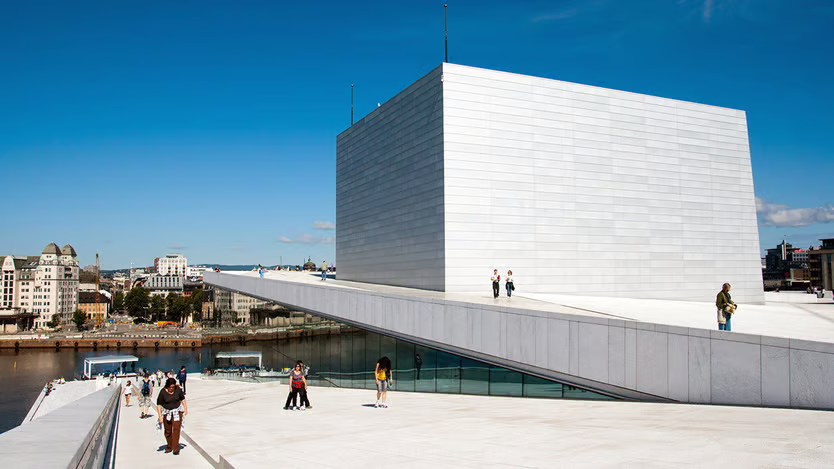

Not something I expected to look up today Context


Not something I expected to look up today Context



photograph: alamy
Sep 12th 2024
Norway’s gdp per person is $94,600, some 11% higher than America’s. The country’s unemployment rate is 2%. Growth, though slowing, has been higher than the rest of Europe’s in recent years. And the Norwegian sovereign-wealth fund, capitalised with oil revenues, is now worth over $300,000 per inhabitant.

chart: the economist
What could be better? Answer: the currency. Norwegians are fretting about the krone, which since the end of 2020 has fallen by 8% against a trade-weighted basket of currencies and flirted with all-time lows against the dollar and the euro, following a decade of slower-paced weakening (see chart). In a country that imports almost all its consumer goods, this has added to inflationary pressure. Norges Bank, Norway’s central bank, is confused as to how the country’s economy can be doing so well and its currency so poorly. An official currency commission may follow.
One commonly cited explanation for the fall in value is a lower oil price. Although this may account for some weakness, it fails to explain why the krone did not rebound along with energy prices in 2021-22. Instead, it fell in 2022 even as oil prices surged. Something else is at play.
Analysts at Apollo Asset Management look to interest-rate differentials. As the Federal Reserve raised rates aggressively in 2022-23, the attractiveness of holding dollars rather than krone rose. Norges Bank, responding to the currency’s weakness, seems set to hold rates at 4.5% for the rest of this year, even as the Fed cuts. But this does not tell the whole story either, since the krone has weakened against lots of currencies, including the euro, with which interest rates diverged much less.
Perhaps it is freak pricing. Low trading volumes mean that anomalies may persist, as big investors will be reluctant to enter the market, given that large interventions will interfere with prices. The Bank for International Settlements, a central-banking club, puts krone turnover at just $125bn a day, against $2.3trn for the euro.
A final possibility will be the most alarming to Norwegians. The krone could still be overvalued, with its long march down being a return to normality after the country became a safe haven from the economic turmoil that hit Europe a decade ago. The Economist’s Big Mac index notes that a burger was priced at nkr74 in Norway against $5.69 in America as of June, implying an exchange of nkr13 to the dollar compared with the market rate of nkr11. A further fall would be good news for tourists in Oslo, who would no longer be quite so shocked by the prices. It would be less welcome for Norwegian consumers.
For more expert analysis of the biggest stories in economics, finance and markets, sign up to Money Talks, our weekly subscriber-only newsletter.
This article appeared in the Finance & economics section of the print edition under the headline “Nordic noir”


By Natalia Ojewska, Aliaksandr Kudrytski, and Colum Murphy
July 24, 2024 at 5:02 AM UTC
Poland has threatened to choke off a key Chinese rail export route to the European Union in a diplomatic gambit to slow escalating the migration crisis on its eastern border.
President Andrzej Duda used his state visit in Beijing in late June to link the issue of migration and freight transit on the Belarusian border, according to people briefed on the talks. The number of irregular crossings from Belarus into Poland has dropped significantly since.
Alexander Lukashenko, the authoritarian leader of Belarus, has spent the last three years trying to stir up a migration emergency on his country’s 400 kilometer (250 mile) frontier with Poland. Tensions escalated in May when a Polish border guard was attacked and killed by a migrant, after which the government in Warsaw pledged to spend around $2.5 billion to fortify the area.
It also found a diplomatic pressure point. As Russia’s invasion of Ukraine shuttered trade routes, Belarus has emerged as the sole railway link for Chinese goods heading to the EU with the volume of containers increasing by 89% in the first quarter of 2024, according to the Eurasian Rail Alliance.
Poland keeps only three checkpoints with Belarus open
Lukashenko welcomed the jump in Chinese rail transit, eager to offset Belarus’ near-total dependence on Russia for cheap energy and loans.
On July 2, after Duda had returned from Beijing, Poland signaled that it would effectively shut rail transit through the Malaszewicze checkpoint on the Belarus border for 33 hours by slowing security and customs checks.
Poland’s leveraging of freight transit in discussions with China “could be a factor” in the lower numbers of border crossings since Duda’s visit, Foreign Minister Radoslaw Sikorski told Bloomberg. “We are still very angry about the killing of our soldier on the border,” he said.
Attempts to breach Poland’s border have ebbed and flowed in recent years, but began to rise sharply in the weeks before European parliamentary elections in June. Polish Prime Minister Donald Tusk said the migrants were predominantly from Yemen, Somalia, Afghanistan, Syria and Iran and accused Belarus and Russia of weaponizing migration.
The Polish president’s trip to China caught Lukashenko’s attention. In a speech on July 2, the Belarusian leader said that Duda “asked Xi Jinping to influence Lukashenko and Putin so that they would end migration.”
The Chinese Foreign Ministry said in a reply to July 11 questions from Bloomberg News that Beijing “hopes that relevant parties can properly resolve differences through dialog” and “ensure the security and smoothness of international logistics channels.”
Irregular border crossings from Belarus have plummeted by 70% since early June, Interior Minister Tomasz Siemoniak told public broadcaster TVP Info on Tuesday. More than one hundred such cases were reported by the Polish border guards on June 27, the last day of Duda’s state visit.
Even if a tiny part of China’s exports to the EU go via Belarus, the shipping crisis on the Red Sea and its consequences for maritime trade mean that Eurasian rail links are enjoying a renaissance, said Konrad Poplawski from the Centre for Eastern Studies, a Warsaw-based think-tank.
Warsaw’s so-far successful leverage of a strategic vulnerability against China can serve as a lesson for policymakers. Beijing, which Poplawski said is the EU’s “trade partner but also a competitor and systemic rival,” can change tack if the bloc is “ready to bear economic costs” when its core interests are at stake.
— With assistance from Maxim Edwards and Slav Okov
A Br*tish woman